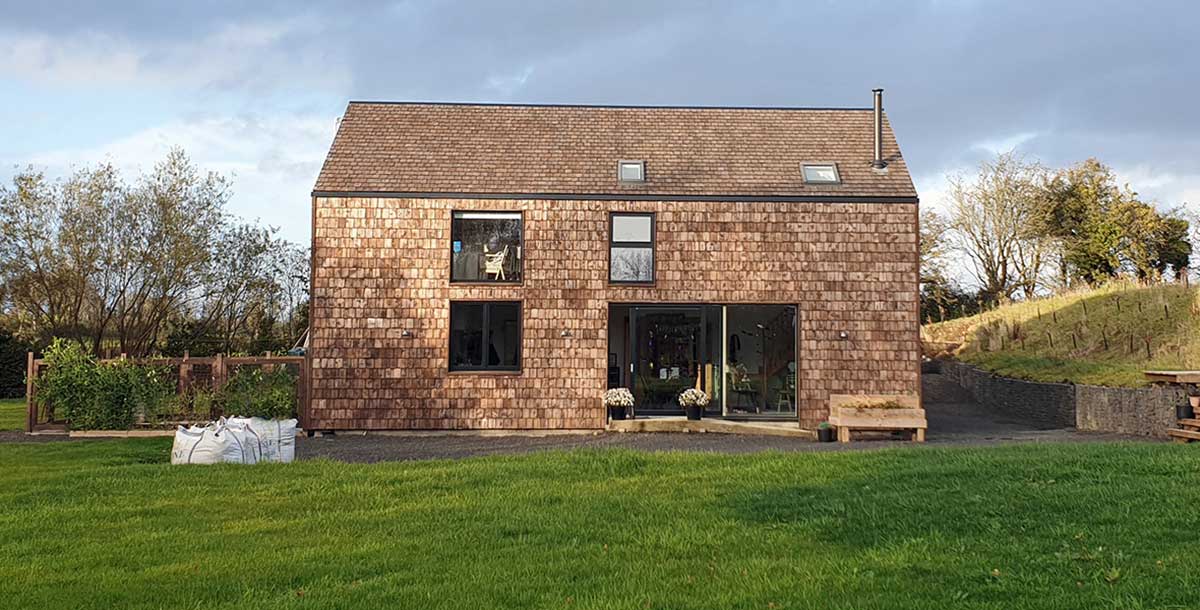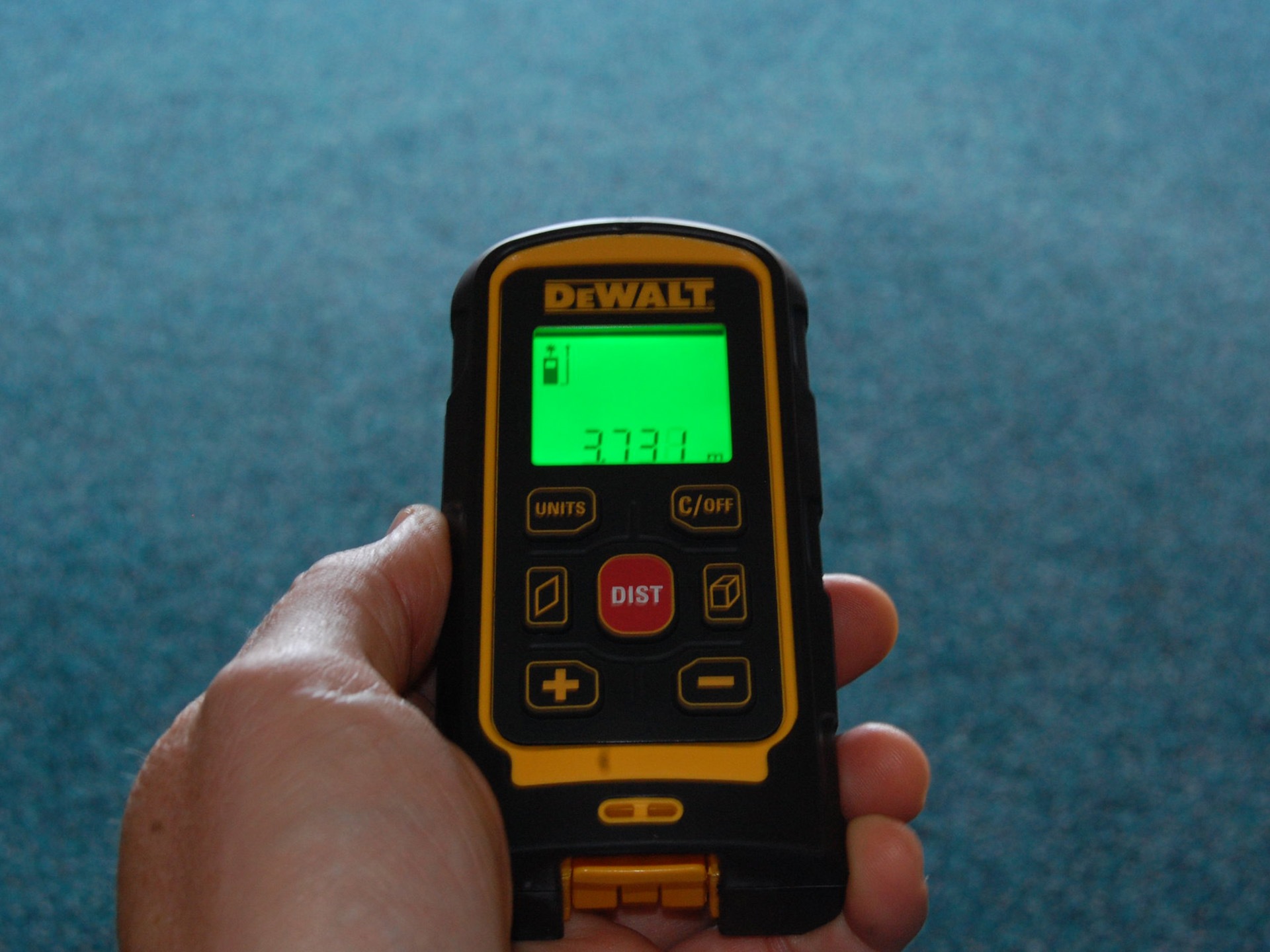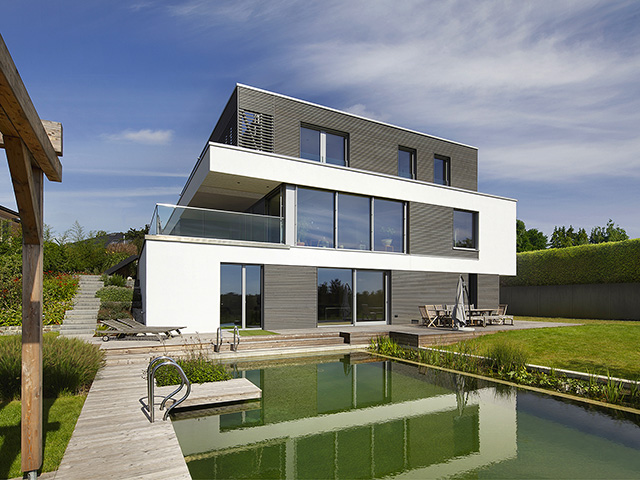Build-a-home heroes
Projects where the self-builders rolled up their sleeves and tackled most of the construction
Some of the most exciting projects featured on Grand Designs have been project-managed and built by their owners. It’s an approach that can achieve great results, especially on a small budget, but it comes with numerous challenges.
Wanting to build a home, these intrepid self builders ignored the risks, rolled up their sleeves and tackled the construction by themselves. Not all of these homes are from Grand Designs, but they have hands-on owners.
Eco new build
By project-managing the build and doing much of the work themselves, Gareth Boyd of 2020 Architects and his wife Lindsey made savings on their home in County Antrim, Northern Ireland.
‘We even charred, brushed and sealed the cedar shingles covering the super insulated timber frame,’ says Gareth. The design kept circulation spaces to a minimum. So, they were able to incorporate four bedrooms, two bathrooms, an open-plan kitchen and living area, utility room and snug. All within 160sqm.
In so doing, their spend was within their target of £160,000, or £1,000 per sqm. The plot is just under an acre and cost £40,000. ‘We’d wanted to build our own home for a while,’ says Gareth.
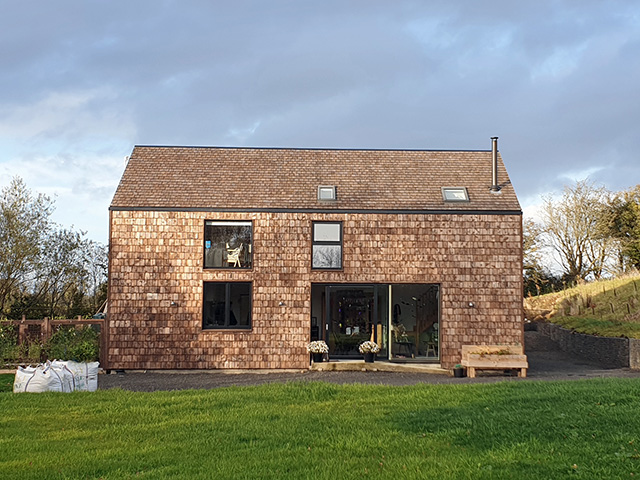
The wooden shingle cladding gives the new build a rustic look. Photo: 2020 Architects
Economical Passivhaus
Value engineering came to the fore to achieve the £500,000 build budget and energy-efficient design of this seven-bedroom Passivhaus home in Cambridgeshire. James Burton, director at Swann Edwards Architecture, used simple forms and detailing to reflect the surrounding fen landscape.
This allowed the owners, Christine Young and her late husband Frank, to manage and undertake a lot of work themselves. They were able to limit their expenditure to £1,150 per sqm. Built under Paragraph 55 (now Paragraph 80) planning rules, on a rural plot which cost £130,000, Far View Barn is a flexible, future-proofed home.
It has superinsulation, high levels of airtightness, mechanical ventilation with heat recovery (MVHR) and twin-stud timber frame construction. The house costs virtually nothing to run and generates an income from rental and feed-in tariffs.
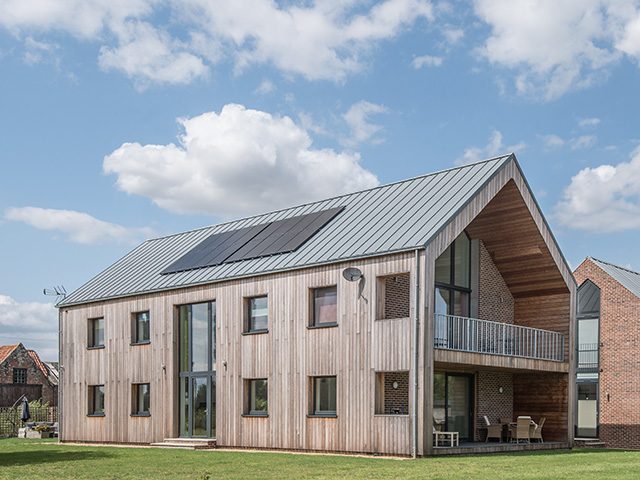
The gable-end wall is inset to shelter the balcony from the elements. Photo: Kiff Photography
1980s barn conversion
With a £250,000 budget, Georgie and Greg Whitaker set about renovating a dilapidated barn on Georgie’s family’s land. With planning laws preventing them from dismantling the existing structure, they had to be smart with their budget.
Despite having minimal previous building experience, Greg took on all of the building work. With the help of friends, he also came up with engineering ideas to resolve issues such as how to reinforce the rotten barn supports and adjust the roof of gradient for the roof lights.
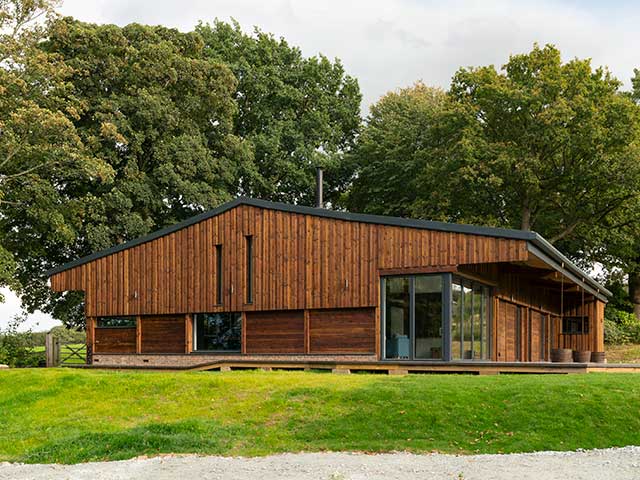
Much of the exterior timber was retained and restored. Photo: Jefferson Smith
Eco family home
Tony and Vanessa Hales built their family home in East Harling, Norfolk, for less than £1,000 per sqm. They worked with architect Ian Hunter to design a four-bedroom house with an open-plan living room, dining room and kitchen, plus a gym and home office.
The house was built to meet Code 6 demands, an previous government standard for zero-carbon homes, so it is highly energy-efficient. To show what was possible on a tight budget, the couple spent just under £300,000 on the project. They sold their former home and used the equity to build their new house in the back garden.
Using insulated concrete formwork (ICF) cost the same as block and brick, but the ICF creates an airtight structure, allowing for the curved design. They also saved money by doing 95 per cent of the work themselves, thanks to a roofing course they took and Tony training in the use of micro cement.
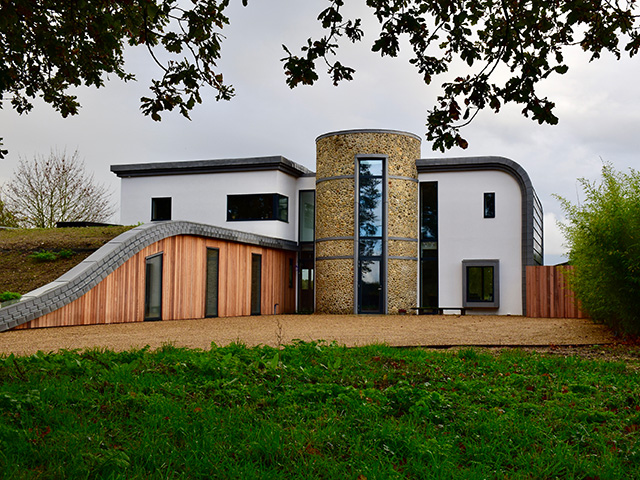
A mix of timber cladding, white render and stone creates textural contrast Photo: Vanessa Hales
Cowshed conversion
Grand Designers Ed and Vicky Versluys bought a derelict cowshed in Somerset, transforming it into a family home. Ed, helped by a labourer friend, admits that it was a matter of learning as he went along.
He relied on a fair amount of internet searches for answers to his construction conundrums. Ed laid a six metre square concrete sub-floor in a heatwave and by himself in half an hour.
‘That bit on Grand Designs where I’m laying the concrete has made me famous! Everyone who saw it has commented on it. I can’t tell you how many times I’ve been asked to do concreting in friends’ houses,’ he said.
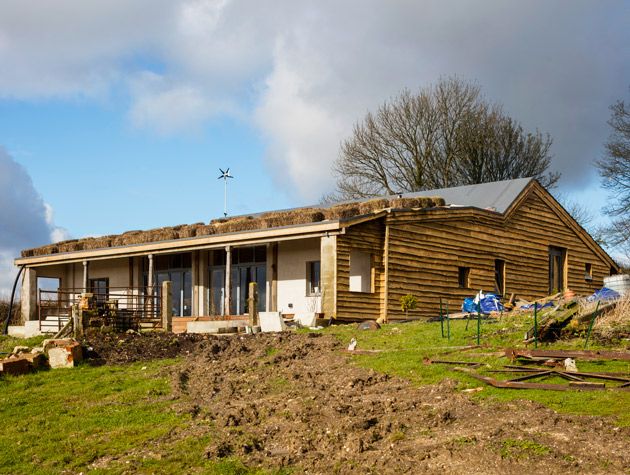
A verandah runs along one side of the converted cowshed. Photo: Matt Chisnall
Renovated barn
In series 2 of Grand Designs, Sue Charman and Martin Whitlock carried out their ambitious plans to create an eco-home from derelict barns. With costs spiralling throughout the renovation, the couple were forced to lay off the builders.
They had to complete the project, albeit slowly, themselves. When Kevin returned at the end of the programme, the couple had made good progress. Though inhabitable, the house was far from finished, with Martin working his way through the rest of the property in his spare time.
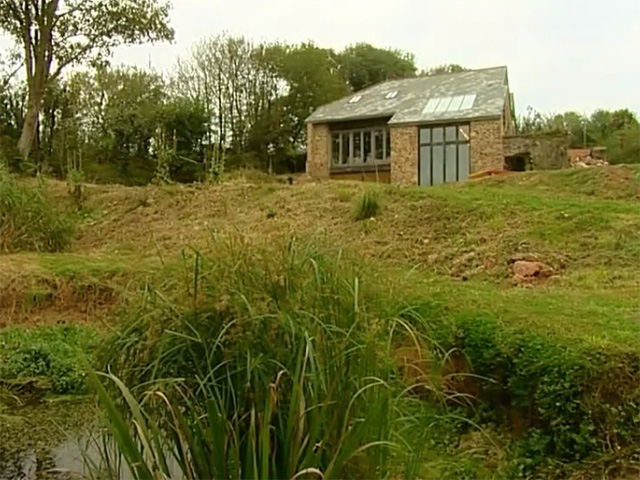
The barn stands at the brow of a lush rural hillside. Photo: Channel 4

